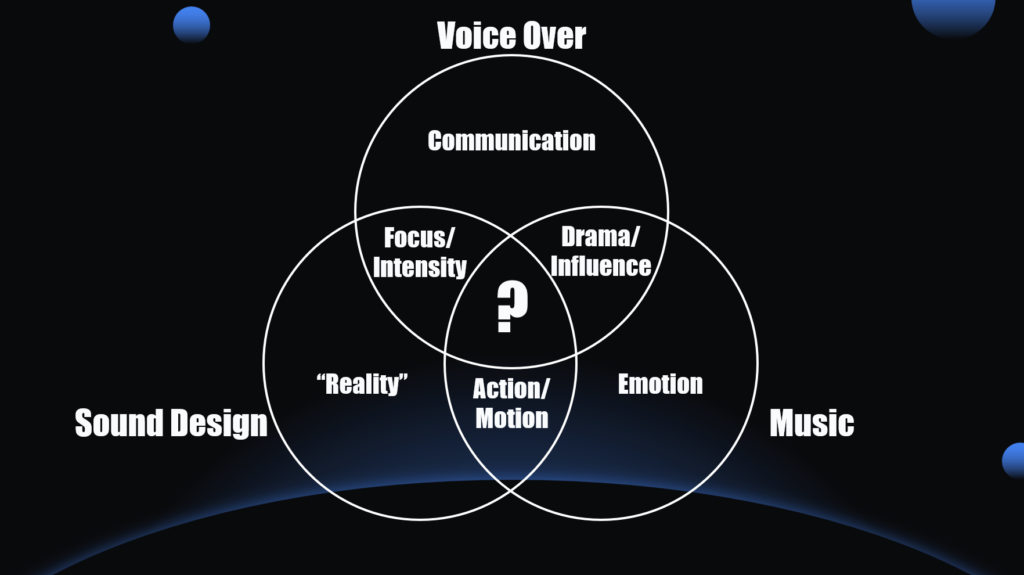A few months back I was given the opportunity to put together and present a talk to the whole studio about game audio. It was pretty fun to put together. However trying to not go over 20min meant that I had to keep it fairly high level regardless of how much I really wanted to deep dive into some of the topics. Anywho, I put together some graphics to demonstrate some ideas about how different parts of game audio can be utilized (at a high level) and it seemed to be the moment most people really were inspired by. Here is the graphic:

This graphic is meant to demonstrate some of the more common ways different aspects of audio can be used to convey a feeling to the player. By no means is this the only things these parts of audio can do, but it seemed to be helpful for some people who have never really thought about how audio is orchestrated into it’s final form.
Voice Over – Communication
Voice over is often the easiest and clearest way to communicate an idea to a player. When it is presented to the player in a manner that it is the primary focus of the soundscape it can be a very efficient tool to do so.
Music – Emotion
Music can be a very good shorthand to communicate an emotion. Happiness, sadness, anger, fear, all of these have a common emotional sound in the language of music and music can often bridge what a game is hoping the response of a player will be to a scene and how they might be interpreting it.
Sound Design – Reality
Sound design often represents the reality of a scene or encounter. This is not to say it has to be actual reality of the real world, but rather that a reality of the world the player is participating in. Sound design gives things weight creates the space those things exist in.
In part 2 we’ll explore how combining these elements can have different possible effects on players.